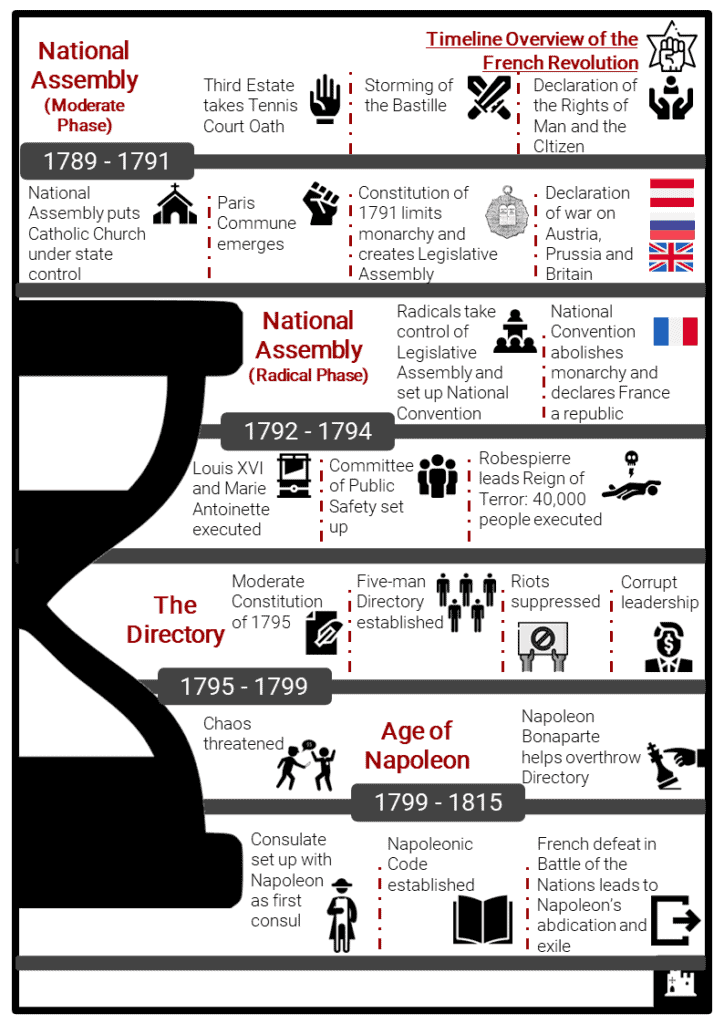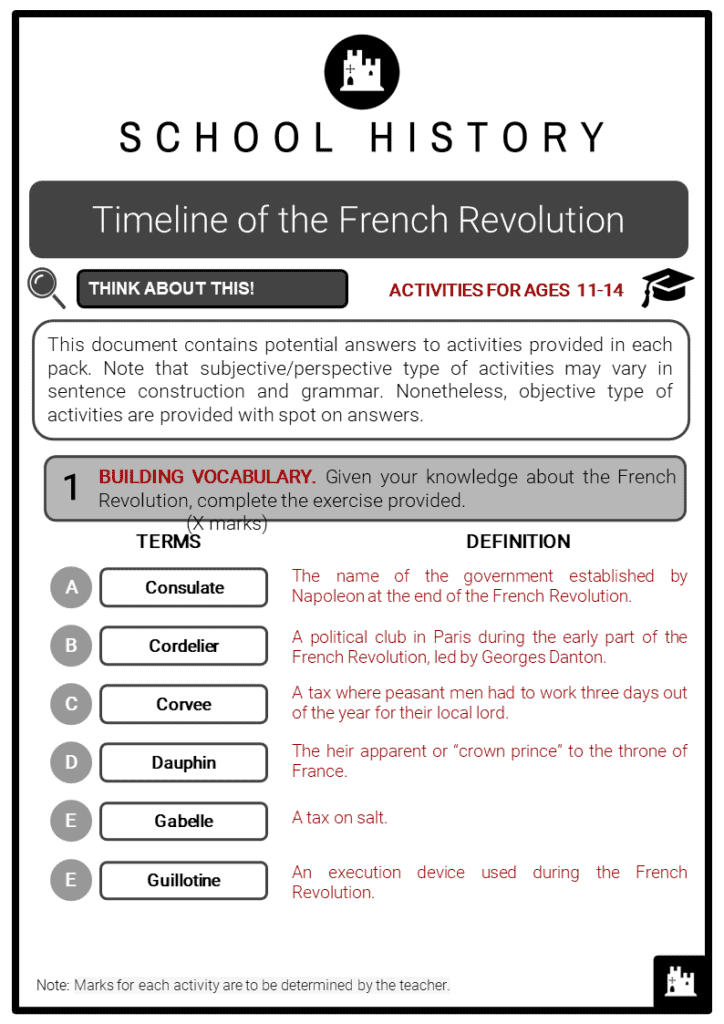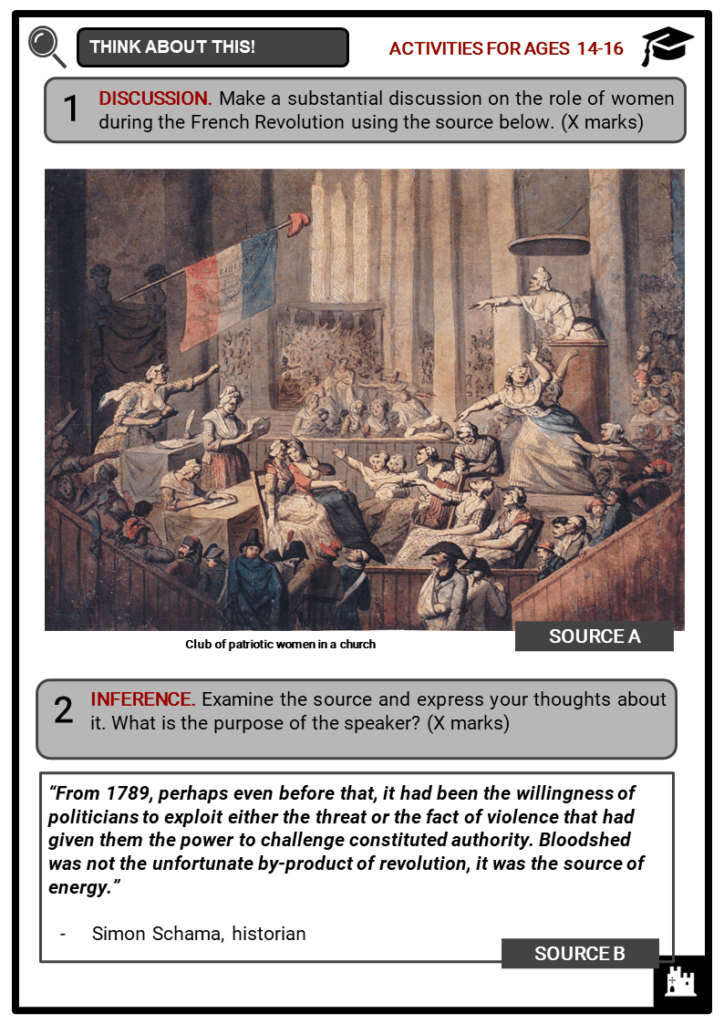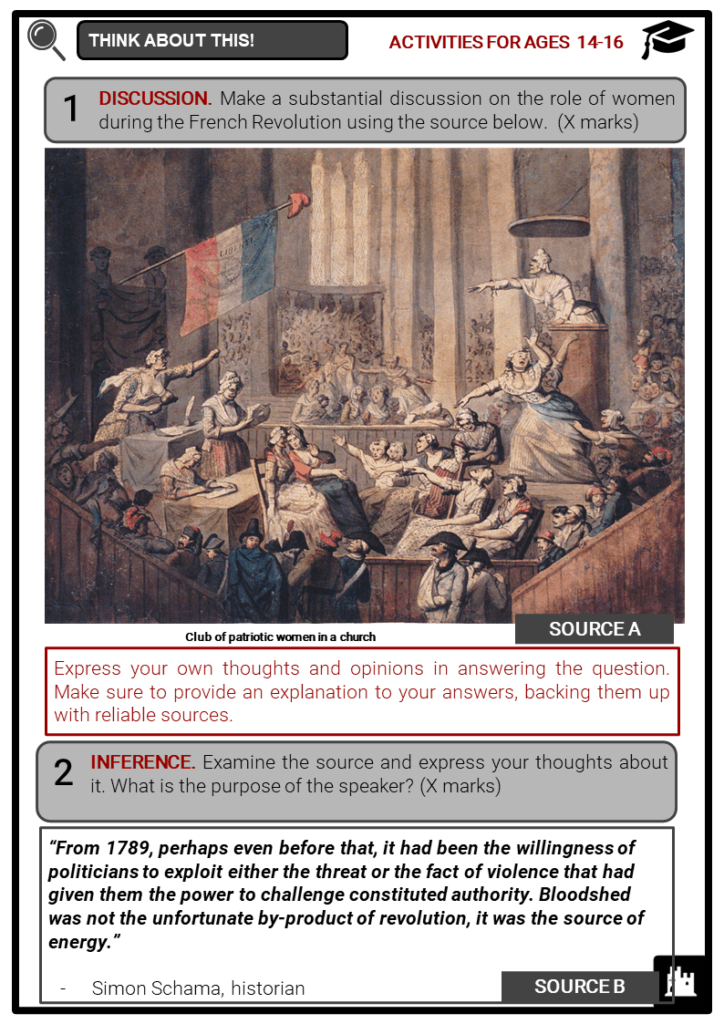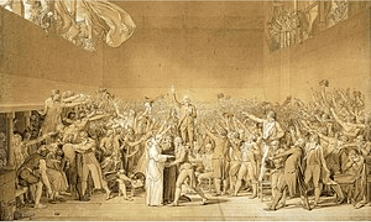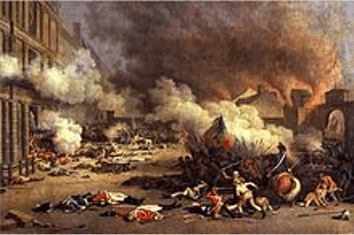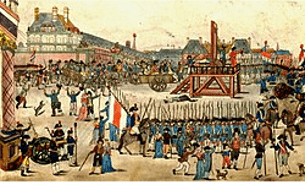Download Timeline of the French Revolution Worksheets
Do you want to save dozens of hours in time? Get your evenings and weekends back? Be able to teach Timeline of the French Revolution to your students?
Our worksheet bundle includes a fact file and printable worksheets and student activities. Perfect for both the classroom and homeschooling!
Table of Contents
Add a header to begin generating the table of contents
Summary
- Timeline Overview of the French Revolution
- National Assembly (Moderate Phase)
- National Assembly (Radical Phase)
- The Directory
- Age of Napoleon
Key Facts And Information
Let’s find out more about the Timeline of the French Revolution
- The French Revolution was a revolutionary event in modern European history. It began in 1789 and ended in the late 1790s when Napoleon Bonaparte ascended to power. The event redesigned France’s political landscape, abolishing an absolute monarch and their feudal system. Despite not achieving all its goals, the French Revolution played a significant role in shaping modern nations through the inherent will of the people. External threats shaped the revolution, unleashing a wave of international clashes that extended from the Caribbean to the Middle East. The French Revolution became the focal point for the development of the most modern political ideologies.
Tennis Court Oath
- Background
- A significant event which showed the growing unrest against Louis XVI and pivoted the start of the French Revolution, the Tennis Court Oath was taken by the members of the Third Estate on 20 June 1789, choosing “not to separate and to reassemble wherever necessary, until the Constitution of the kingdom is established.”
- On 17 June, the Third Estate started to label themselves the National Assembly, headed by Honoré Gabriel Riqueti, Comte de Mirabeau.
- On the morning of 20 June, the deputies were surprised to find out that the chamber door could not be opened and soldiers were seen guarding the door. They instantly thought a royal attack was being planned by King Louis XVI, so Joseph-Ignace Guillotin, one of the members, suggested the deputies assembled in an indoor jeu de paume court (Royal Tennis Court of Versailles).
- 576 of the 577 members of the Third Estate took the Tennis Court Oath.
- Joseph Martin-Dauch was the only person who did not take the oath.
- The oath was a revolutionary act and a declaration of the people’s political authority instead of the monarchy. This movement made Louis XVI call for the clergy and the nobility to affiliate with the Third Estate in the National Assembly to impose a false appearance that he controlled the National Assembly.
- Oath
- The National Assembly, Considering that it has been called to establish the constitution of the realm, to bring about the regeneration of public order, and to maintain the true principles of monarchy; nothing may prevent it from continuing its deliberations in any place it is forced to establish itself; and, finally, the National Assembly exists wherever its members are gathered.
- Decrees that all members of this Assembly immediately take a solemn oath never to separate, and to reassemble wherever circumstances require until the constitution of the realm is established and fixed upon solid foundations; and that said oath having been sworn, all members and each one individually confirms this unwavering resolution with his signature.
- We swear never to separate ourselves from the National Assembly, and to reassemble wherever circumstances require until the constitution of the realm is drawn up and fixed upon solid foundations.
Storming of the Bastille
- A medieval armoury, fortress and political prison on the east side of Paris, the Bastille depicted the tyranny of the Bourbon monarchs in the centre of Paris.
- On the afternoon of 14 July 1789, the Bastille was attacked by an angry and aggressive mob, marking its fall as the flashpoint of the French Revolution.
- By the summer of 1789, France was about to start a revolution. The military governor of the Bastille, Bernard-René Jordan de Launay, was alarmed that his armoury would be the next destination of the revolutionaries, hence he called for reinforcements. On 12 July, monarchs sent 250 barrels of gunpowder to the fortress, and Launay asked his men to deploy into the Bastille and raise its two drawbridges.
- In the early hours of 14 July, a huge mob, armed with muskets, swords and several substitute weapons, started to assemble around the Bastille. Launay’s troops were able to hold the crowd back, however as more and more Parisians were gathering on the Bastille, Launay raised a white flag representing the surrender of his armoury.
- The storming of the Bastille represented the end of the ancien regime.
- The military governor and his men were put into jail, the Bastille’s gunpowder and cannons were taken, and the seven inmates at the time of the storming were freed. Upon reaching the Hôtel de Ville, where Launay was to be captured and tried by a revolutionary council, he was abducted by a crowd and murdered.
Declaration of the Rights of Man and the Citizen
- Inspired by the Enlightenment philosophers and drafted by Abbé Sieyès and the Marquis de Lafayette, in consultation with Thomas Jefferson in 1789, the Declaration of the Rights of Man and the Citizen is a human civil rights document from the French Revolution.
- The 1789 Declaration, together with other bills, influenced much of the 1948 United Nations Universal Declaration of Human Rights.
- The ideas in the Declaration included concepts about individualism, the social contract as proposed by Jean-Jacques Rousseau, and the separation of powers advocated by Montesquieu, having the spirit of secular natural law as the foundation of the human rights document.
- When the Declaration was being drafted, the rights mentioned were only applicable for men. Moreover, this document served as an assertion of vision, including ideals towards which France promised to aspire in the future, rather than the reality as it was not deeply influenced by the Westerners or even France at the time.
- It contained a preamble and 17 individual articles; however, just like other documents from the American Revolution, the Declaration did not specifically assure the rights of women, slaves or racial minorities.
- “The August Decrees and Declaration of the Rights of Man represented the end of the absolutist, seigneurial and corporate structure of eighteenth-century France. They were also a proclamation of the principles of a new golden age. The Declaration, in particular, was an extraordinary document… Universal in its language and in its optimism, the Declaration was ambiguous on whether the propertyless, slaves and women would have political as well as legal equality, and silent on how the means to exercise one’s talents could be secured by those without education or property.” Peter McPhee
National Assembly puts Catholic Church under state control
- The French Revolution led to an intense change of power from the Catholic Church to the state.
- The August proclamation removed tithes, and on 2 November the National Assembly seized all the properties of the Catholic Church in order to back a new paper currency called assignats.
- In return, the state should:
- Pay the clergy
- Care for the poor, sick and orphaned
- The Church topped the list of individual landowners in France, handling almost 10% of all estates and imposed tithes, effectively a 10% tax on income from poor farmers through their crops.
- In November 1790, the clergy were asked to pledge loyalty to the Civil Constitution, which resulted in a separation from those who refused, referred to as the ‘non-juring’ or the ‘Refractory clergy.’
- On 13 February 1790, religious orders and monasteries were abolished, while monks and nuns returned to their private lives.
- In October, about 30 bishops wrote a declaration condemning the law, intensifying the opposition.
Paris Commune Emerges
- The Paris Commune served as the government of Paris from 1789 to 1795. Organised in the Hôtel de Ville after the storming of the Bastille, the Paris Commune was composed of 144 delegates voted in by the 48 divisions of Paris.
- It lost much power in 1794 and was taken over in 1795.
- The Paris Commune rebelled in the summer of 1792, disobeying orders from the central French government. It also took responsibility for routine civic functions, although it is best known for assembling people towards direct democracy and insurrection when it considered the Revolution to be in danger.
- The government of the republic was replaced by the French Directory, the governing five-member committee in the French First Republic, in November of 1795.
- Jean Sylvain Bailly was the first mayor of the Commune, succeeded by Pétion de Villeneuve in November 1791.
- In 1792, the Jacobins, who were not members of the Legislative Assembly due to the Self-Denying Ordinance, ruled the Commune.
- During the same year, the government established a formal cabinet, with the appointment of the Ministers of the French National Convention to handle administrative departments.
Constitution of 1791 limits monarchy and creates Legislative Assembly
- The Legislative Assembly acted as the legislature of France from 1 October 1791 to 20 September 1792 during the French Revolution. It supported the focal point of political debate and revolutionary law-making between the National Constituent Assembly and of the National Convention.
- The Legislative Assembly held its first meeting on 1 October 1791, housing 745 members, most of which were middle class citizens. The remaining 345 deputies, known as The Marsh or The Plain, belonged to no definite party; they supported the ideals of the revolution, but would sometimes agree with the Rightists.
- Rightists (Right-wing politics)
- Consisted of about 260 Feuillants
- Embraced the view that such social orders and hierarchies are inevitable, natural, normal or desirable
- Composed of loyal constitutional monarchists
- Leftists (Left-wing politics)
- Consisted of 136 Jacobins and Cordeliers
- Headed by Jacques Pierre Brissot, Condorcet and Pierre Victurnien Vergniaud
- Influenced by the Enlightenment ideals
- Suspicious of Louis XVI
- The Assembly stripped King Louis XVI, assumed to be of intelligence with the enemy, of all his royal duties, responsibilities and privileges. He and his family were jailed in the Square du Temple in Paris.
- On 10 August 1792, a new resolution was granted to draft another National Convention, to be elected by universal suffrage.
Declaration of War on Austria, Prussia and Britain
- On 20 April 1792, France declared war on the two countries, headed by Brissot, commencing the French Revolutionary Wars, but endured a number of disastrous defeats. In February 1793, the Convention declared war on Britain and the Dutch Republic; the latter countries were joined by Spain, Portugal, Naples and Tuscany in the War of the First Coalition.
Radicals take control of Legislative Assembly and set up National Convention
- A parliament of the French Revolution, the National Convention was established on 10 August 1792, succeeding the two-year National Constituent Assembly and the one-year Legislative Assembly. Considered as the first French government organised as a republic, the National Convention abolished the monarchy.
- The Convention was formed when the Legislative Assembly mandated the provisional suspension of King Louis XVI and the confab of a National Convention to create a new constitution without monarchy.
- The National Convention was the first French assembly elected by a suffrage, disregarding the distinctions of class.
- Girondins
- Represented the more moderate elements of the Convention and disagreed on the wide influence held in the Convention by Parisians
- Montagnards
- Sat on the highest benches in the National Assembly
- More radical and had strong connections to the sans-culottes of Paris
- In June 1792, under the pressure of the Montagnards, the Girondins vanished as a political force.
- Throughout the winter of 1792 and spring of 1793, the city of Paris was tormented by food riots and mass hunger. In April 1793, the Convention established the Committee of Public Safety, whose dominance started the Reign of Terror.
Louis XVI and Marie Antoinette Executed
- On 21 January 1793, Louis XVI was executed by guillotine at the Place de la Révolution.
- Louis XVI was executed by Charles-Henri Sanson, the royal executioner of France.
- Four days previously, he had been placed on trial by the National Convention, convicting him of high treason in an almost unanimous vote.
- His death became the turning point in French and European history, symbolising the much-awaited end of a continuous thousand-year era of absolute monarchy in France and the true beginning of democracy.
- Others suggested King Louis XVI’s execution was as an act of insignificant slaughter and assumed it to be a sign that France had turned into a state of violent, amoral chaos.
- Nine months after King Louis XVI’s death, his wife, Marie Antoinette, was also executed by guillotine at the same location in Paris.
Reign of Terror: 40,000 people executed
- The Reign of Terror, 5 September 1793 to 28 July 1794, was a series of massacres and public executions during the French Revolution, provoked by the rivalry between two political factions, the Girondins and the Jacobins.
- The foundation of the Terror was focused around the April 1793 formation of the Committee of Public Safety.
- In this 10-month period, most of the purges were carried out under the authority of Maximilien François Marie Isidore de Robespierre, a member of the Committee of Public Safety who personally arrested 542 individuals.
- According to archival records, there were about 16,600 people killed on charges of counter-revolutionary activity, and 40,000 might have been summarily executed or died while awaiting trial.
- The Convention ordered Robespierre’s arrest; he and his group hid in the Hôtel de Ville, protected by the National Guard. He was executed on 28 July 1794, together with 19 men, succeeded by 83 members of the Commune. His death marked the end of the Reign of Terror.
Moderate Constitution of 1795
- The Constitution of 1795 was ratified during the Thermidorian Reaction in the French Revolution.
- This was also called the Constitution of Year III.
- It created a liberal republic with a franchise based on the payment of taxes, just like that of the Constitution of 1791. This also included a bicameral legislature to weaken the legislative process and a five-man directory.
- The central government held on to its power, including emergency powers to manipulate press freedom and freedom of association.
Five-man Directory Established
- The Directory, composed of five members, was considered the administrative committee in the French First Republic from 2 November 1795 until 9 November 1799.
- Corps Législatif is the French term for Legislative Corps.
- The Corps Législatif was the legislature in France from 1795 to 1814, consisting of the Council of Five Hundred, with 500 delegates of 30 years of age or above who suggested the legislation, and the Council of Ancients, made up of 250 delegates of individuals who were aged 40 or older and had the power to accept or reject the proposal.
- The Ancients had the privilege to choose the executive - the five Directors - from the rosters drawn by the Five Hundred.
- Qualifications
- A new Director had to be at least 40 years old
- He should have formerly served a deputy or minister
- Responsibility
- Chooses government ministers, ambassadors, army generals, tax collectors and other officials
- The Directory faced widespread corruption. Its laws were designed to protect the positions of those who were allies of the Revolution and stopped the return of the Bourbons.
Napoleon Bonaparte helps overthrow the Directory
- On 9 November 1799, Napoleon Bonaparte, together with several well-known political figures, overthrew the Directory by a coup d’état. His power and influence was assured by the new Constitution of 1799, which retained and defended the concept of a republic government, however in reality, created a dictatorship.
- Napoleon Bonaparte, 15 August 1769 to 5 May 1821, was a French military and political leader, who rose to popularity during the French Revolution and headed a number of successful battles during the Revolutionary Wars.
- Upon finishing his studies in a military academy in Paris in September 1785, Bonaparte was delegated as a second lieutenant in an artillery corps. His career beginnings during the Revolution were spent in Corsica, battling in a complicated three-way struggle among royalists, revolutionaries and Corsican nationalists. Bonaparte also sided with the republican Jacobin movement and advanced to the captain position in 1792, even though he had exceeded the maximum amount of leave of absence and despite heading a protest against a French army in Corsica.
- He was promoted to brigadier general at the age of 24. He gained popularity and attracted the attention of the Committee of Public Safety where he was assigned to monitor the artillery of France’s Army of Italy.
- Preceding Robespierre's arrest and the Thermidorian Reaction in July 1794, Bonaparte, despite his ties with Robespierre, was discharged from prison within two weeks and was commanded to create plans to ambush Italian positions during France’s war with Austria.
- In October 1795, Paris royalists announced its rebellion against the National Convention. Headed by Napoleon, the angry mob were resisted on 5 October 1795, with about 1,400 royalists killed. The loss of the royalists’ uprising earned Bonaparte popularity, wealth and the support of the new government, the Directory.
- During the French Revolutionary Wars, Bonaparte defeated Italy, despite losing against Egypt and thereby weakening Britain’s entry to its trade interests in India. After a number of victories, he was honoured as a hero in France.
Consulate set up with Napoleon as first consul
- Napoleon Bonaparte overthrew the Directory and replaced it with a new kind of government: a three-person Consulate, where he and Abbe Sieyes assigned themselves as consuls, though Napoleon named himself the First Consul of France.
- Napoleon enacted reforms by establishing order and stability in society through authoritarian means. He started the first modern secret police, headed by Fouche, and issued a general amnesty to lessen the number of potential protesters within Europe, permitting exiles, aristocrats to Jacobins, to go back, assuming he could monitor people more closely if they stayed in France, rather than abroad.
- As the first consul, Napoleon ordered increasing restrictions on freedom of expression in France, with arrangements that were then extended throughout his subjugated territories.
Napoleonic Code Established
- Also called the “French Civil Code of 1804”, the Napoleonic Code consisted of five main branches, or codes, each pointing to a specific aspect of law, defining the concept of equality before the law and securing the right to property.
- This was the most famous law since Hammurabi’s Code.
- The Napoleonic Code was completed in 1801 and was issued in 1804. Napoleon joined sessions of the Council of State that altered the drafts of the new civil code. These revisions changed the nature of the civil law legal system.
- The Code’s popularity spread throughout Europe, pivoting the end of feudalism and liberation of sers where it took effect, and acting as the basis of the legal systems in other regions of the world. It also acknowledged the ideals of civil liberty and the secular character of the state.
French defeat in Battle of the Nations leads to Napoleon’s abdication and exile
- The Battle of Leipzig, also called the Battle of the Nations, took place from 16 to 19 October 1813 at Leipzig, Saxony. Napoleon’s Grande Armée lost against the Coalition armies of Austria, Prussia, Sweden and Russia, headed by Tsar Alexander I and Karl von Schwarzenberg.
- On his defeat, Napoleon was forced to go back to France while the Sixth Coalition continued its momentum, abolishing the Confederation of the Rhine and attacking France early the next year. The first consul had no choice but to abdicate and was exiled to Elba in May 1814.
Image sources:


